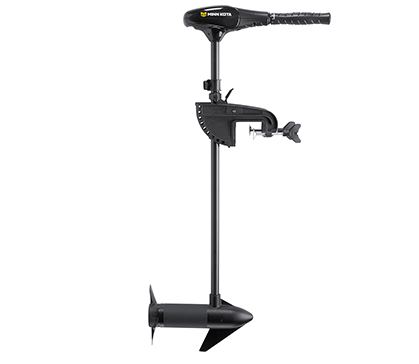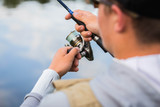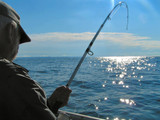7 Trolling Motor Maintenance Tips
The trolling motor plays a vital role on your boat and experiences the most usage and wear. From tangling in seaweed to bumping against rocks and stumps, your trolling motor endures a lot of damage.
Brands like Minn Kota and MotorGuide design trolling motors to be tough, durable, and long-lasting. You still need to maintain your motor regularly for optimal performance.
Discover essential tips and techniques for maintaining your Minn Kota trolling motor in top condition so you can concentrate on fishing without worrying about unforeseen technical issues.
Regular Cleaning
After every fishing trip, give your trolling motor a quick freshwater rinse to prevent corrosion and the buildup of salt, debris, and dirt that can degrade performance. Use a hose or bucket to wash down the entire exterior, including the propeller, shaft, mount, and control head. This step is especially crucial for saltwater motors.
Use a soft brush or cloth dampened with a mild detergent solution for stubborn dirt, and avoid harsh solvents, chlorine or ammonia-based cleaners, or abrasives that could damage protective coatings.
Inspect for Damage
Before each trip, inspect your Minn Kota trolling motor for potential issues to avoid disrupting your fishing trip. Taking a few minutes for this pre-trip check can save you from unexpected problems on the water.
Check the propeller for dings, cracks, or bent blades, ensuring smooth rotation. Also, examine the prop shaft to ensure it is straight and that its housing is securely attached. Verify that the mounting bracket and foot pedal are tightly secured to stop the motor from slipping.
You also need to test the foot pedals’ responsiveness. A responsive pedal should rebound quickly after you press it, allowing for better control of the boat. If the pedal sticks or depresses too slowly, it can affect your ability to steer the boat accurately. This is particularly important in tight spots such as creeks and channels or when maneuvering around obstacles like rocks, logs, or through areas with thick vegetation.
Examine power cables and battery connections for any signs of wear, such as fraying or greenish-white deposits that suggest corrosion. If you find corrosion, clean the terminals using a mixture of baking soda and water using a wire brush.
Also, ensure that all electrical contacts are firmly and correctly attached. Loose connections can lead to an intermittent power supply, affecting your trolling motor’s performance. Tighten loose clamps and connectors to ensure a secure and stable connection.
Battery Maintenance
Get the best trolling motor performance by keeping batteries fully charged. Use a battery tester to confirm the battery is fully charged before each trip. Always recharge depleted batteries before your next outing.
The electrolyte level should be above the top of the battery plates for flooded lead-acid batteries. If the level is low, add more distilled water. Regularly clean corrosion from terminals and ensure the connections are tight. Do not allow the battery to run down to very low levels (deep discharging). This will help prolong your battery’s lifespan.
Invest in a high-quality onboard charger or portable maintainer for consistent battery maintenance. Replace trolling motor batteries every 2-3 years or 500 charge cycles, and always choose reliable marine-grade replacements from reputable brands like Optima or Interstate.
Lubrication
A trolling motor has many moving parts that can sustain wear and tear due to friction. Lubricating your trolling motor allows all parts to move easily while protecting against moisture damage and corrosion.
Some parts of your trolling motor that need to be frequently lubricated include:
- Propeller shaft. Use marine-grade waterproof grease on the shaft and inside the prop hub to prevent seizing. Reapply after each trip if needed.
- Pivot points. Apply waterproof grease to the tilt pivot tube and steering pivot bosses.
- Mounting bracket. Use spray lubricants like silicone or Teflon on the mounting bracket bolts and bushings.
- Foot pedal mechanism. Spray interior pedal linkage joints with moisture-displacing lubricant.
Check your owner’s manual for Minn Kota’s lubrication recommendations. Proper lubrication prevents friction, wear, and corrosion-related seizing of parts. Keep quality marine grease on board for reapplication.
Seal and Gasket Check
The seals and gaskets on your Minn Kota are designed to keep water out of internal compartments. Eventually, these rubber components can become cracked, brittle, or compressed. Inspect areas like the battery box, foot pedal assembly, and propeller shaft housing for gaps, cracking, or deterioration.
If you find any leaks, replace the old seals with factory replacements from the manufacturer, using a sealant that’s safe for plastic. Make sure the seals are fully secure before you use the motor again. Do this by closely checking the sealed areas for any gaps or misalignments. Testing the motor in a safe, controlled setting like a tank or a small pond is also a good idea to ensure no water gets into the sealed parts.
Propeller Care
Regularly check the propeller of your trolling motor for any fishing lines or debris entangled around the blades. Gently clear away any twisted lines, weeds, or blockages. These can prevent the propeller from spinning freely, causing vibration, reducing performance, and leading to faster wear and tear.
Closely examine the propeller blades for any cracks, chips, bent blades, or excessive wear that may have occurred from impacts. Worn and damaged props can affect speed, battery runtime, and trolling effectiveness. If you notice significant damage, replace the propeller to restore peak performance and thrust.
Storage and Cover
Always store your propeller in a cool, dry location away from direct sun, rain, and temperature fluctuations that can accelerate deterioration.
Before putting the motor into storage, disconnect the battery and store it in a separate location, following appropriate battery maintenance procedures. This helps prevent the battery from discharging during prolonged periods of non-use.
Clean and rinse the entire motor before storage to remove corrosive salt and debris accumulation, allowing it to fully dry before covering. Then, use a fitted Minn Kota motor cover to protect it from dust, UV rays, and physical damage during storage.
Detach the propellor and lightly grease the prop shaft. Then, store them in a clearly marked bag to prevent nicking the blades.

Protect Your Trolling Motor
A trolling motor is a major investment that can increase your success on the water. Spending just an hour or two each month on preventative upkeep can save you the hassle of your trolling motor failing.
For quality trolling motor parts, accessories, and repairs, reach out to FISH307. Our experienced team has the knowledge and experience to help you find the right products so you get the most out of your time on the water.
Contact us today at FISH307 for all your trolling motor needs, and explore our blog for more information on Minn Kota maintenance for your trolling motor.
Recent Posts
-
Best Time To Go Fishing
Finding the perfect time to go fishing can increase your chances of a successful catch. Whether y
-
Saltwater Fishing Tips
Saltwater fishing combines skill, patience, and a bit of luck for limitless adventures. From the




